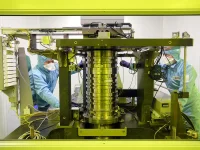Russia teamed up with Belarus to make computer chips at home. They built a new machine that prints tiny circuits on silicon wafers measuring 8 inches across. The Zelenograd Nanotechnology Center worked with a Belarusian company called Planar on this project. They created this system because Western countries blocked Russia from buying modern chip-making equipment through sanctions.
Their new machine uses laser beams to draw circuit patterns on special coatings that cover silicon discs. These patterns become actual circuits after chemical treatment. The technology makes chips at 350 nanometers - about as advanced as computer parts from the 1990s when Intel made Pentium II processors. Modern chips elsewhere measure just 3-5 nanometers, showing how far behind Russian technology stands.
These basic chips can still power everyday electronics and certain military gear that doesn't need cutting-edge performance. The Russian center already announced plans to create better 130 nanometer systems by 2026 as part of government efforts to improve local manufacturing. Though far from world-class standards, these machines help Russia build its first real chip-making base.
The Russian government watches this project closely since it might determine where they spend money next. Officials hope these first steps will help them catch up somewhat with Western technology over time. Even these older-style chips give Russia an important starting point for making more electronics without depending on foreign suppliers.
Their new machine uses laser beams to draw circuit patterns on special coatings that cover silicon discs. These patterns become actual circuits after chemical treatment. The technology makes chips at 350 nanometers - about as advanced as computer parts from the 1990s when Intel made Pentium II processors. Modern chips elsewhere measure just 3-5 nanometers, showing how far behind Russian technology stands.
These basic chips can still power everyday electronics and certain military gear that doesn't need cutting-edge performance. The Russian center already announced plans to create better 130 nanometer systems by 2026 as part of government efforts to improve local manufacturing. Though far from world-class standards, these machines help Russia build its first real chip-making base.
The Russian government watches this project closely since it might determine where they spend money next. Officials hope these first steps will help them catch up somewhat with Western technology over time. Even these older-style chips give Russia an important starting point for making more electronics without depending on foreign suppliers.












